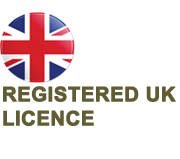Welcome to Our UK Driving License Services!
Get your UK driving license without exams quickly and hassle-free. We make the process simple and efficient. Start today!
Services We offer!!!
https://registeredirelandlicence.com/We also do ban uplift and points removal, Contact us direct on WhatsApp if you need our service in points removal or ban uplift
Frequently Asked Questions (FAQS)
A UK driving licence is an official document issued by the Driver and Vehicle Licensing Agency (DVLA) in Great Britain or the Driver & Vehicle Agency (DVA) in Northern Ireland. It authorizes individuals to legally drive motor vehicles on public roads in the UK.
In the UK, driving licences are categorized based on the type of vehicle you are allowed to drive. Here are the main types of UK driving licences issued by the DVLA (Driver and Vehicle Licensing Agency) in Great Britain and the DVA (Driver & Vehicle Agency) in Northern Ireland:
1. Provisional Driving Licence
- Issued to learners who want to start driving.
- Required before taking driving lessons and tests.
- Must be used with a supervising driver until a full licence is obtained.
2. Full Driving Licence
- Granted after passing both the theory test and practical driving test.
- Allows unrestricted driving within the permitted vehicle categories.
3. Category-Specific Licences
These licences are issued for different types of vehicles:
Car and Motorcycle Licences
- Category A – Motorcycles (various subcategories for different engine sizes).
- Category AM – Mopeds (maximum speed 28mph).
- Category B – Standard car licence (up to 3.5 tonnes, max 8 passengers).
- Category B+E – Car with a trailer.
Larger Vehicle and Passenger Transport Licences
- Category C1 – Small trucks (3.5 – 7.5 tonnes).
- Category C – Large trucks (over 7.5 tonnes).
- Category C+E – Large trucks with trailers.
- Category D1 – Minibuses (up to 16 passengers).
- Category D – Buses and coaches.
- Category D+E – Buses with trailers.
Specialist Vehicle Licences
- Category F – Agricultural tractors.
- Category G – Road rollers.
- Category H – Tracked vehicles (e.g., tanks).
- Category K – Mowing machines and pedestrian-controlled vehicles.
- Category L – Electrically propelled vehicles.
- Category M – Trolleybuses.
- Category N – Exempt from road tax vehicles.
The validity of a UK driving licence depends on the type of licence and the age of the driver.
1. Provisional Driving Licence
- Valid for 10 years but must be upgraded to a full licence after passing the driving test.
2. Full Driving Licence
- Until age 70 – A standard full UK driving licence is valid until the driver turns 70 years old.
- After age 70 – The licence must be renewed every 3 years, but no additional tests are required.
3. Vocational/Professional Licences (HGV, Bus, Lorry – Categories C & D)
- Valid for 5 years until the driver turns 45.
- After age 45, renewal is required every 5 years with a medical check-up.
- After age 65, renewal is required every year.
Obtaining a UK driving licence can be challenging due to the strict requirements and testing process. However, with proper preparation, it is achievable.
Why It Can Be Difficult
Multiple Steps in the Process
- Applicants must first apply for a provisional licence, pass the theory test, and then take a practical driving test.
- The tests are designed to ensure a high level of road safety and driving competence.
Challenging Theory and Practical Tests
- The theory test includes 50 multiple-choice questions and a hazard perception test, which requires spotting potential dangers.
- The practical test assesses real-world driving skills, road awareness, and vehicle control. Many candidates fail on their first attempt.
High Costs and Long Waiting Times
- Driving lessons are expensive, typically costing between £25-£40 per hour.
- The demand for test slots can result in months-long waiting times.
Strict Driving Standards
- UK roads have complex traffic rules, roundabouts, and parking regulations.
- Mistakes such as not checking mirrors or poor lane discipline can lead to automatic failure.
How to Improve Your Chances of Passing
- Take professional driving lessons from a qualified instructor.
- Use online resources and practice tests for the theory exam.
- Get familiar with UK roads and traffic rules before taking the practical test.
Would you like tips on how to prepare effectively for the test?
Visitors to the UK cannot apply for a full UK driving licence unless they meet specific residency requirements. However, there are certain options available depending on their nationality and length of stay.
1. Driving with a Foreign Licence in the UK
- EU/EEA Licence Holders: Can drive in the UK without restrictions until their licence expires. After that, they must exchange it for a UK licence.
- Non-EU Licence Holders: Can drive in the UK for up to 12 months using their foreign licence. After this period, they must apply for a UK licence.
2. Can Visitors Apply for a UK Licence?
To apply for a UK driving licence, you must:
- Be a UK resident (staying for at least 185 days in a 12-month period).
- Apply for a provisional licence first.
- Pass both the theory and practical driving tests.
3. How Foreign Drivers Can Get a UK Licence
- If eligible, exchange a valid foreign licence for a UK one (applies to certain countries).
- If not eligible for exchange, take the full UK driving test (theory + practical).





